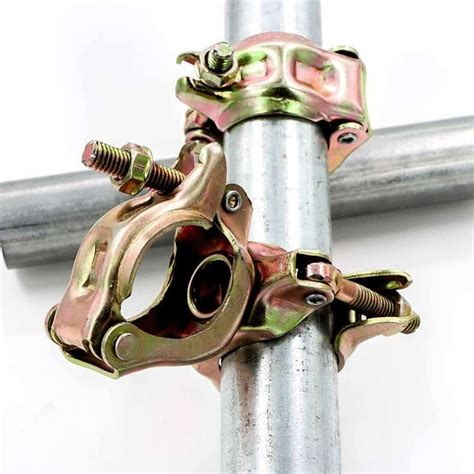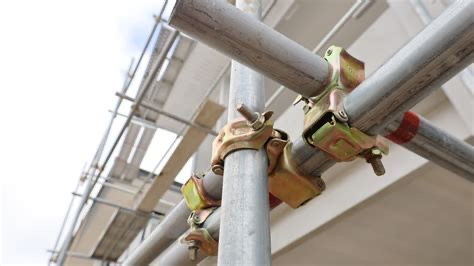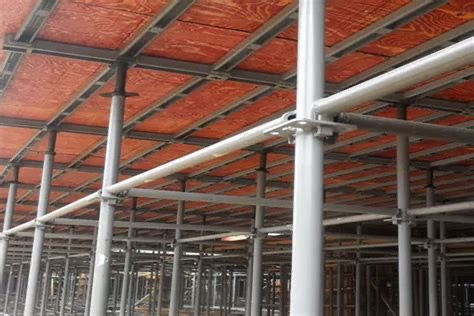Content Menu
● Understanding Tube Coupler Scaffolding Systems
>> Key Components
>> How Tube Coupler Connections Work
● Strength Characteristics of Tube Coupler Connections
>> Load-Bearing Capacity
>> Factors Influencing Connection Strength
>> Experimental Evidence
● Safety Aspects of Tube Coupler Scaffolding Systems
>> Compliance with Standards
>> Inspection and Maintenance
>> Assembly by Trained Personnel
>> Protective Measures
● Advantages of Tube Coupler Scaffolding Systems
● Common Challenges and Solutions in Tube Coupler Connections
● Conclusion
● FAQ
>> 1. How strong are tube coupler connections compared to other scaffolding systems?
>> 2. What types of couplers are used in tube coupler scaffolding systems?
>> 3. How important is the tightening torque on coupler bolts?
>> 4. Can tube coupler scaffolding be used on irregular or complex structures?
>> 5. How often should tube coupler scaffolding be inspected?
● Citations:
Tube coupler scaffolding systems, also known as tube and clamp or tube and coupler scaffolding, are among the most robust and flexible scaffolding solutions used worldwide. The strength and safety of these systems largely depend on the integrity of the tube coupler connections, which join steel tubes to form a stable framework capable of supporting heavy loads and multiple working platforms.

Understanding Tube Coupler Scaffolding Systems
Tube coupler scaffolding systems consist of steel tubes connected by couplers (also called clamps) that secure the tubes at various angles. This modular system allows for the creation of scaffolds in almost any shape or size, making it ideal for complex or irregular structures.
Key Components
- Steel Tubes: Typically galvanized steel tubes with a diameter of 48.3 mm and wall thickness ranging from 3.2 mm to 4 mm.
- Couplers: The essential connectors that join tubes together. There are several types:
- Right Angle Couplers: Connect tubes at 90 degrees, forming the scaffold's frame.
- Swivel Couplers: Connect tubes at any angle, used for diagonal bracing.
- Sleeve Couplers: Join two tubes end-to-end to extend length.
- Board Retaining Couplers: Secure scaffold boards in place.
- Base Plate Couplers: Stabilize the scaffold at its base.
How Tube Coupler Connections Work
Couplers rely on friction between the clamp and the tube surface to transfer loads. When tightened correctly, they create a rigid joint that resists bending, twisting, and shear forces. The bolts and nuts used in couplers are typically tightened to a torque of about 45 ft-lbs to ensure maximum grip without damaging the tubes.
Strength Characteristics of Tube Coupler Connections
Load-Bearing Capacity
Tube coupler scaffolding systems are engineered to support substantial vertical and lateral loads. According to OSHA and international standards, these systems can safely carry heavy construction materials, equipment, and multiple workers across several platforms.
- Vertical Loads: The steel tubes and couplers can support loads of up to 75 pounds per square foot or more, depending on the scaffold design.
- Lateral Loads: Swivel couplers and diagonal bracing resist wind forces and unbalanced weights, preventing sway and collapse.
- Multiple Platforms: The system supports simultaneous use of several working platforms at different heights, increasing efficiency without compromising safety.
Factors Influencing Connection Strength
Factor | Description | Impact on Strength |
Coupler Quality | Made from drop-forged carbon steel with corrosion-resistant coatings | Ensures durability and consistent clamping force |
Proper Tightening Torque | Bolts tightened to manufacturer-recommended torque (approx. 45 ft-lbs) | Maximizes friction and joint rigidity |
Tube Condition | Tubes free from dents, rust, or deformation | Maintains full load-bearing capacity |
Correct Coupler Type | Using right-angle, swivel, or sleeve couplers as appropriate | Ensures joints resist intended forces |
Assembly Technique | Competent personnel following best practices | Prevents loosening and structural weaknesses |
Experimental Evidence
Research and field tests confirm that properly assembled tube coupler connections exhibit excellent mechanical strength, comparable to or exceeding many modular scaffolding systems. The friction-based load transfer combined with the robust steel materials results in a highly reliable scaffold structure.

Safety Aspects of Tube Coupler Scaffolding Systems
Compliance with Standards
Tube coupler scaffolding systems must comply with OSHA, ANSI, BS 1139, and EN 12811 standards. These regulations specify material quality, assembly procedures, load limits, and safety features such as guardrails and toeboards.
Inspection and Maintenance
Regular inspection is critical to scaffold safety. A competent person should inspect couplers and tubes before each use, checking for:
- Loose or missing bolts
- Corrosion or damage to couplers or tubes
- Proper alignment and tightness of connections
- Any deformation or wear that could reduce strength
Assembly by Trained Personnel
Due to the system's flexibility and complexity, tube coupler scaffolding should be erected, altered, and dismantled only by trained and competent workers. Proper training ensures couplers are correctly selected and tightened, and the overall scaffold is stable.
Protective Measures
- Guardrails and Toeboards: Prevent falls and falling objects.
- Base Plates and Sole Boards: Distribute load and provide stable footing.
- Fall Arrest Systems: Harnesses and lanyards for worker protection at height.
Advantages of Tube Coupler Scaffolding Systems
- Versatility: Can be configured to fit any shape or height.
- Strength: Supports heavy loads and multiple platforms.
- Durability: Galvanized steel and high-quality couplers resist corrosion and wear.
- Customizability: Adjustable connections allow scaffolding to adapt to complex structures.
- Reusability: Components can be dismantled and reused on different projects.
- Safety: Meets or exceeds international safety standards when properly assembled.
Common Challenges and Solutions in Tube Coupler Connections
Challenge | Solution |
Loose or under-tightened couplers | Use a calibrated torque wrench to tighten properly |
Corrosion weakening clamps | Use galvanized or coated couplers; replace damaged parts |
Incorrect coupler type used | Select coupler based on connection angle and load |
Tube deformation or damage | Inspect and replace damaged tubes before assembly |
Inexperienced assembly | Provide training and supervision for scaffold erectors |
Conclusion
Tube coupler connections are the backbone of tube coupler scaffolding systems, providing the strength and flexibility necessary for safe, durable, and adaptable scaffolding structures. When manufactured from high-quality materials and assembled by trained personnel following strict safety standards, these connections can support heavy loads, resist lateral forces, and accommodate complex configurations. Regular inspection and maintenance ensure that tube coupler scaffolding systems remain reliable throughout their use, making them a trusted choice for construction, industrial, and maintenance projects worldwide.

FAQ
1. How strong are tube coupler connections compared to other scaffolding systems?
Tube coupler connections are among the strongest scaffolding joints, capable of supporting heavy loads and multiple platforms. Their friction-based clamping and robust steel materials provide superior strength and flexibility compared to many modular systems.
2. What types of couplers are used in tube coupler scaffolding systems?
Common couplers include right-angle couplers (90-degree connections), swivel couplers (variable angles), sleeve couplers (end-to-end tube joining), board retaining couplers, and base plate couplers.
3. How important is the tightening torque on coupler bolts?
Proper tightening torque (around 45 ft-lbs) is critical to ensure maximum friction and joint rigidity. Under-tightened couplers can loosen, reducing scaffold stability and safety.
4. Can tube coupler scaffolding be used on irregular or complex structures?
Yes, the flexibility of coupler connections allows scaffolding to be customized to fit irregular shapes and complex architectural features.
5. How often should tube coupler scaffolding be inspected?
A competent person should inspect the scaffold before each use, with more detailed inspections monthly and after any modifications or severe weather events.
Citations:
[1] https://www.osha.gov/sites/default/files/publications/OSHA_FS-3759.pdf
[2] https://scaffoldtype.com/tube-and-coupler-scaffolding/
[3] https://www.defenal.com/products/tube-coupler-scaffold.html
[4] https://www.osha.gov/sites/default/files/publications/OSHA_FS-3760.pdf
[5] https://safetyeducations.com/tube-and-coupler-scaffolds/
[6] https://lynnladder.com/product/tube-and-clamp-scaffold-system/
[7] https://apacsafety.com/the-ultimate-guide-of-scaffolding-couplers/
[8] https://www.sciencedirect.com/science/article/abs/pii/S0141029622013311






















